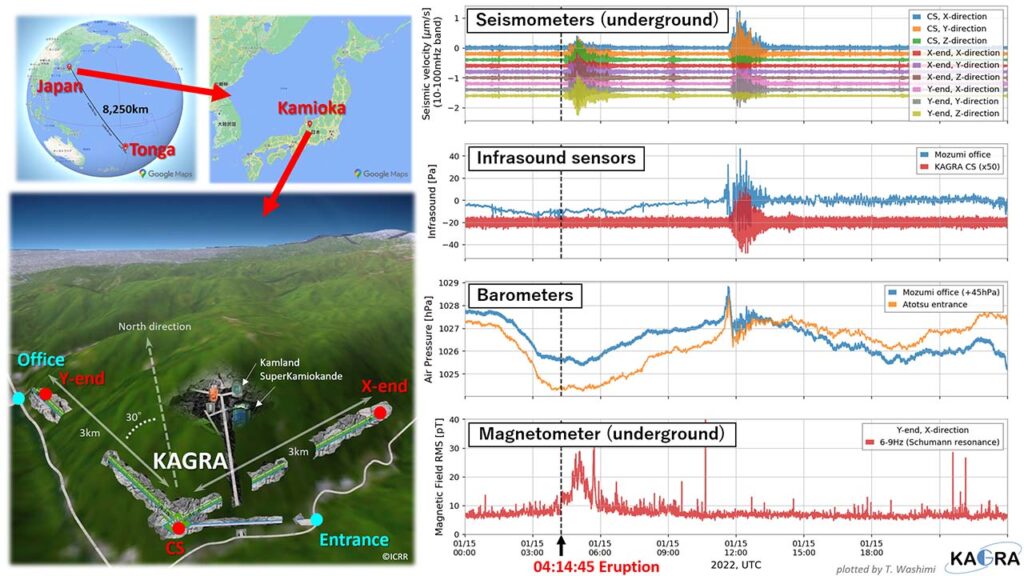KAGRA Environmental data for the Tonga Eruption
On January 15, 2022, at 04:14:45 (UTC), the undersea volcano of Hunga Tonga-Funga Ha’apai erupted and caused extensive damage there, which has attracted worldwide attention. The effects of this eruption were reported in Japan as well, e.g. tsunami waves capsizing ships, and were observed by the environmental monitors of KAGRA.
KAGRA is a gravitational wave telescope built underground in Kamioka, Japan, with about 400 researchers from Japan and abroad, mainly from the Institute for Cosmic Ray Research (ICRR) of the University of Tokyo, the National Astronomical Observatory of Japan (NAOJ), and the High Energy Accelerator Research Organization (KEK). Similar gravitational wave detectors, LIGO in the U.S. and Virgo in Italy, are built on the surface. As a unique feature, KAGRA is built in an underground facility to reduce noise. Because the gravitational wave signals are very tiny, it is necessary to reduce all kinds of noise for the observations. To monitor environmental noise such as ground vibrations and sounds, and distinguish it from gravitational wave signals, a wide variety of sensors such as seismometers, barometers, infrasound sensors, and magnetometers are working in the underground KAGRA observatory and on the surface in Kamioka.
The global seismic waves, shock waves, and electromagnetic waves generated by the recent eruption in Tonga reached Kamioka, which is more than 8,000 km away, and were clearly seen not only on the ground but also underground. These data make it possible to evaluate the reduction efficiency of the underground facility for the noise coming from the ground. The detailed analysis is currently ongoing. In addition, facilities that can observe various types of signals simultaneously with high precision are rare in the world and KAGRA environmental monitoring is expected to be useful in the fields of geophysics, meteorology, and disaster prevention.
KAGRA is currently upgrading its instruments for the next observing run, and this eruption did not affect the gravitational wave observations.
